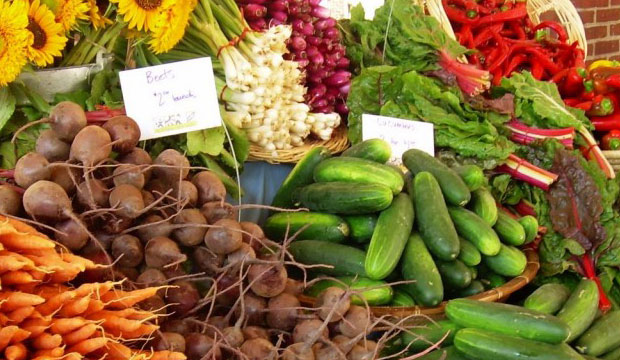World trade has been a regular item in Farming Notes so it seems only sensible to start with Secretary Purdue’s recent comments. “As World Trade Month begins, we recognize the vital role trade plays in supporting U.S. agriculture, rural America, and our economy,” said U.S. Secretary of Agriculture Sonny Perdue. “America’s farmers, ranchers, foresters, and producers feed, fuel, and clothe our nation and the rest of the world…..”
Agricultural trade is critical for the U.S. farm sector and the American economy. In 2017, U.S. exports of food and farm products totaled $138.4 billion, up from $134.7 billion in 2016. Additionally, farm exports supported more than 1.1 million American jobs across the entire economy. With 95 percent of the world’s consumers living outside the United States, USDA’s work pursuing new and expanded trade is essential to removing barriers, helping America’s farmers and ranchers reach new customers, and ensuring that U.S. products and producers are treated fairly. USDA May 1st.
The trade concerns come at a time when it is well known that the farm economy has been under real stress for the last 2-3 years. The income from farming and ranching has fallen by 50% and farm debt has increased more than 30% in the last decade according to USDA. This year it is expected that 82% of U.S. farm income is expected to come from off-farm work.
No wonder that the new Farm Bill will have to play a critical role in maintaining our industry during these difficult times while maintaining the 80% of the total funds are devoted to food and nutrition programs. Our largest markets are Mexico and Canada and China has also become a major importer of our soybeans, in particular, but also milk. As a result trade agreements are crucial. Our agriculture benefits if there are zero or very low trade barriers.
Some interesting items. Further proof of climate change has been that migratory bats are arriving earlier and overwintering. Challenge for them is to arrive when there will be enough insects to support bat offspring. A recent study estimated that bats indirectly contribute around $23 billion to the U.S. economy by keeping plant-eating insects in check and by hunting bugs that prey on pollinator insects. We are being obliged to learn much more about the interaction of climate with our crops and their association with insects, predators etc.
More farmers are using cover crops and finding significant value to the soil and to their crop yields. However studies by USDA and researchers at Nebraska and Iowa State Universities are finding, for example, that bean leaf beetles, wireworms, common stalk borer and seed corn maggots may be more prevalent and so potentially damaging to subsequent corn and soybean crops. Ensuring the termination of a cover crop at least two weeks before planting and seed treatments may be necessary. Emily Unglesbee. DTN 4/4/2018
New farm based enterprises are very much in the news particularly local breweries, wineries and distilleries. In Pennsylvania the number of brewery pubs increased 46% between 2014, limited wineries by 37% and limited distilleries by 275%. Breweries are looking for locally produced wheat and hops and Penn State is evaluating varieties that are suited to our climate and meet the taste requirements of the wide range of beers being produced. Deer Creek Malthouse in Chester County buys all its barley locally and supplies many breweries. Dad’s Hat distillery also purchases all its rye in Pennsylvania and produces whiskeys that have received high praise. Based on Rural Perspectives Jan/Feb 2018.
Flowers – Pennsylvania? Really? The tradition goes back a long time as Penn State’s College of Agricultural Sciences has one of the oldest and largest flower trials in the world at their Manheim, Lancaster County Ag Research and Extension Center. With $193 million in wholesale value Pennsylvania’s floricultural companies rank #15 in the nation. The trials are greatly facilitated by the more than 3,700 hours from 130 Master Gardener volunteers who are involved in the flower trial program. Flower trials are critical to ensure that the industry and its customers have access to the best performing flowers under our climatic conditions. Once again research at the highest level must be maintained to ensure our ornamental plant producers and all farmers can remain competitive.
When is beef beef? The Cattlemen’s Association has petitioned the USDA to define beef as the products of cattle born, raised and slaughtered in the traditional manner. One of the five priorities of the National Cattlemen’s Beef Association is “protecting the industry and consumers from fake meat and misleading labels on products that do not contain real beef.”

